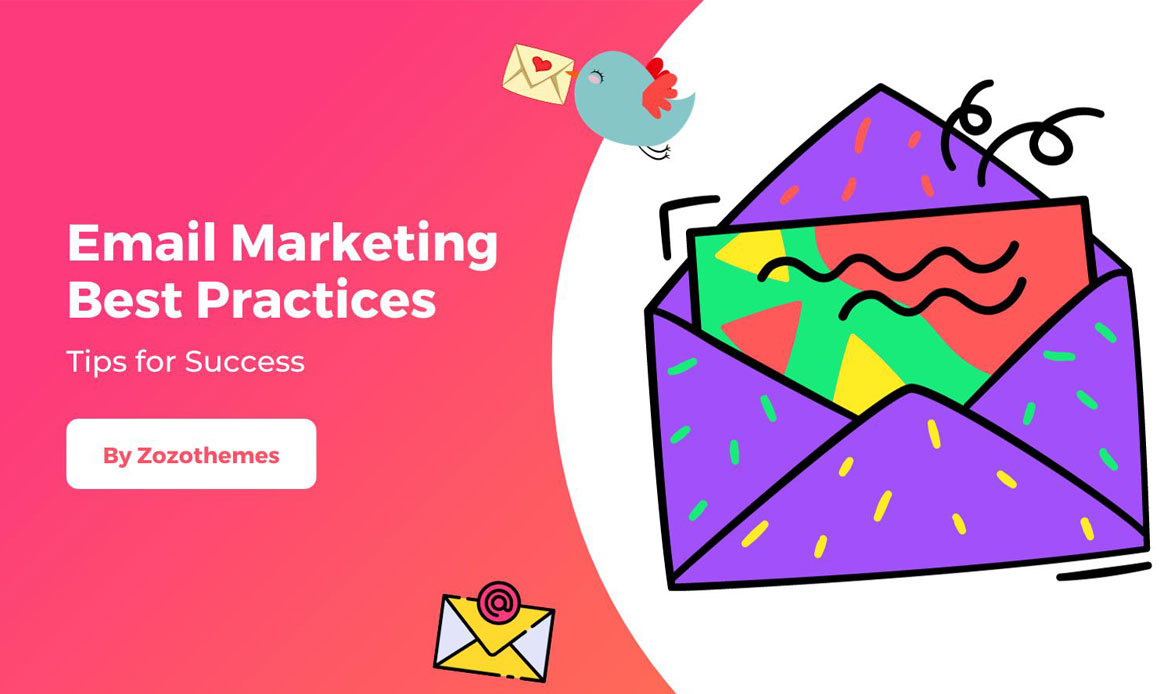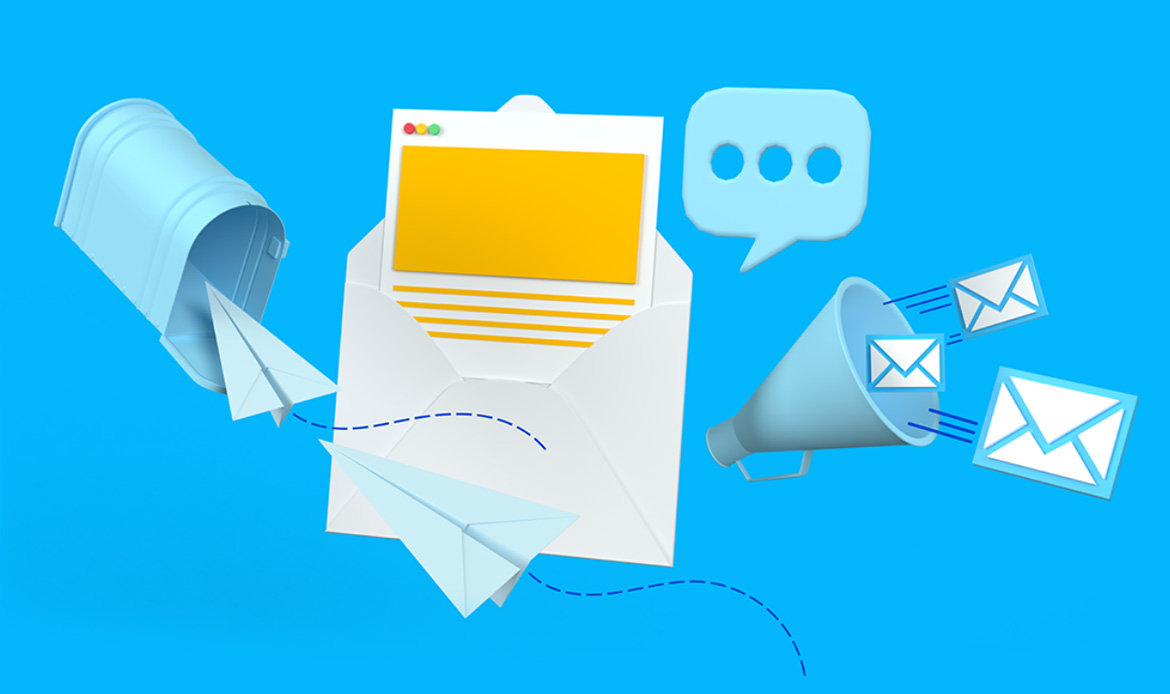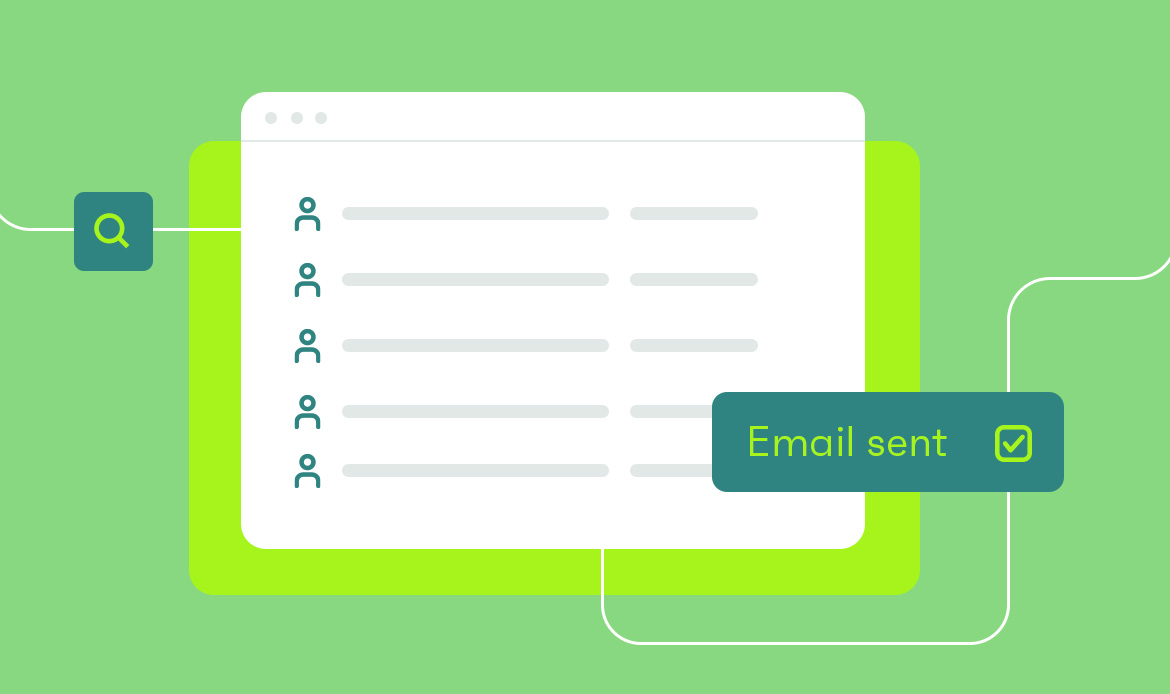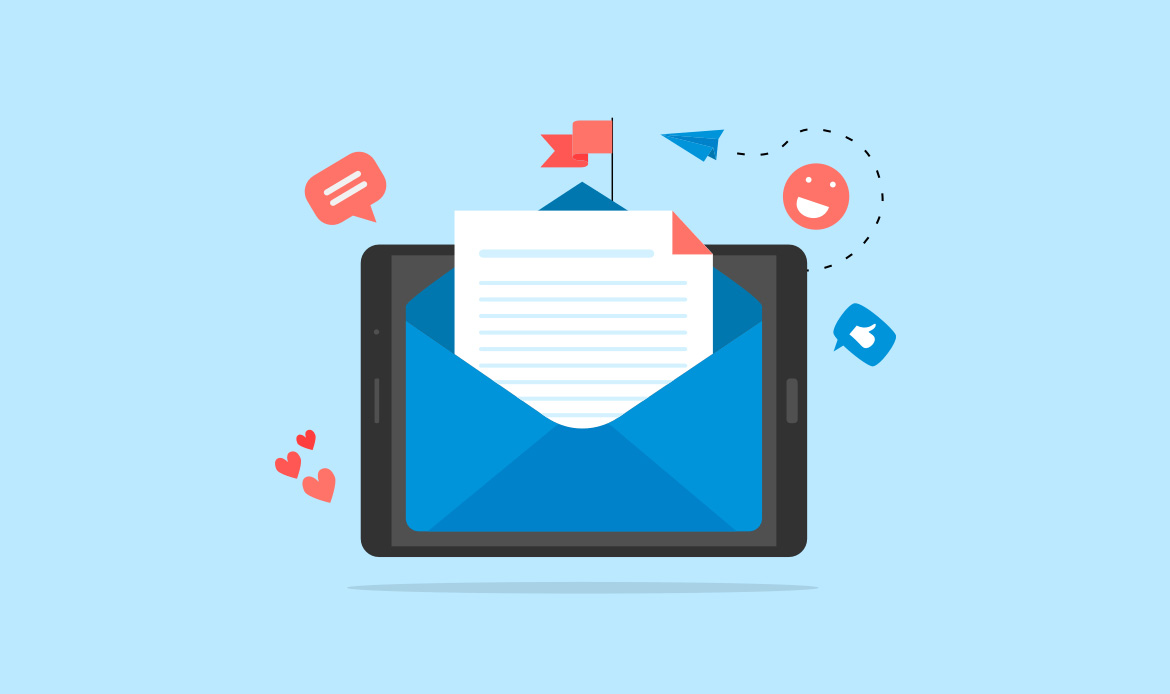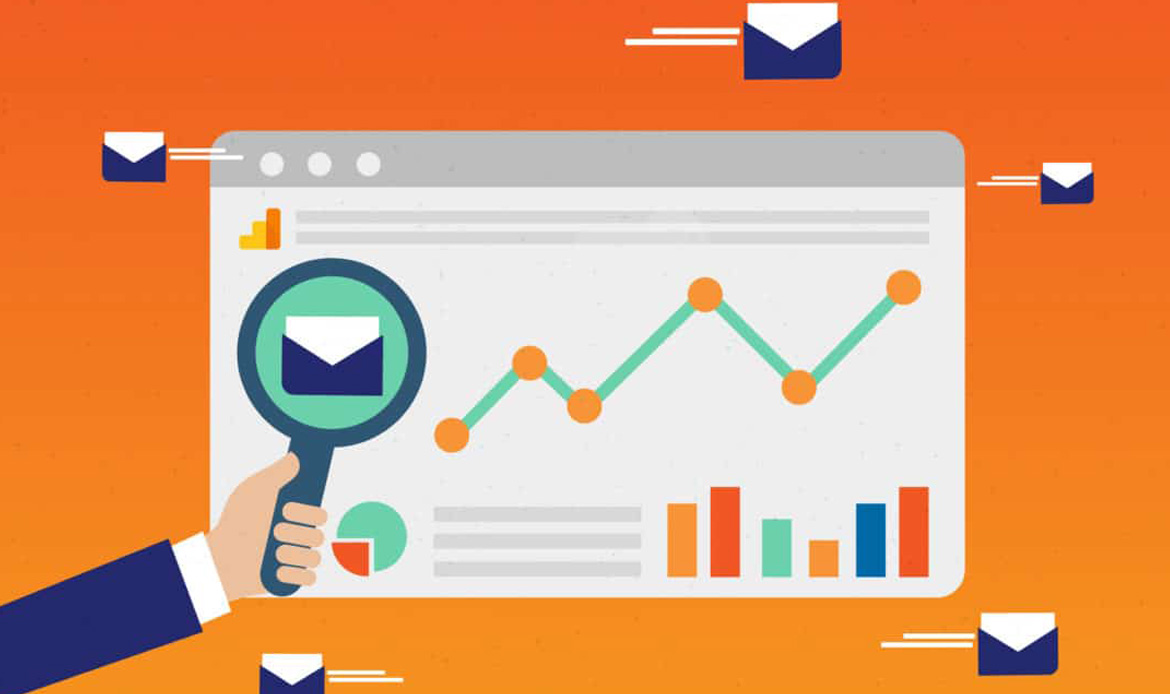Welcome to our comprehensive guide on “Email Marketing Best Practices: Tips for Success.”
In today’s fast-paced digital world, email marketing remains a cornerstone of successful marketing strategies. It’s a dynamic, cost-effective tool that provides a direct line of communication to your audience. But, to truly unlock its potential, you need to understand and apply the best practices that define email marketing success.
In this article, we’ll dive deep into the strategies, techniques, and insights that can take your email marketing efforts to the next level. Whether you’re new to email marketing or a seasoned pro, these tips will empower you to create engaging, effective email campaigns that build stronger connections with your audience, increase conversions, and drive your business forward.
Are you ready to explore the email marketing landscape, uncover the secrets of crafting compelling content, discover the importance of data analysis, and grasp the significance of personalization? Let’s embark on this journey to master the art of email marketing success.
What is email marketing?
Email marketing is a digital marketing strategy that involves sending emails to a group of people with the goal of promoting products, services, or building relationships with customers or prospects. It’s a powerful and cost-effective method for connecting with your audience, as it allows you to reach a large number of people directly in their email inboxes.
Email marketing can serve various purposes, including:
Promotions and Sales: Marketers often use email campaigns to announce special offers, discounts, or sales events. This can lead to increased sales and revenue.
Customer Engagement: Building relationships with customers is essential. Regular email communication can keep your audience engaged and informed about your brand, products, or industry.
Lead Nurturing: Email marketing is an effective way to nurture leads. By sending relevant content and information, you can guide potential customers through the sales funnel.
Content Sharing: Many companies use email to distribute content such as blog posts, newsletters, and educational materials. This can position your brand as an industry authority and provide value to subscribers.
Feedback and Surveys: You can gather valuable feedback from your audience through email surveys and feedback requests.
Event Promotion: Promoting webinars, conferences, product launches, and other events is a common email marketing application.
Advantages of email marketing
Email marketing offers several advantages, making it a popular and effective digital marketing strategy for businesses of all sizes. Here are some of the key advantages of email marketing:
Cost-Effective: Email marketing is one of the most cost-effective marketing methods available. You don’t need to spend money on printing or postage, and email marketing tools are generally affordable. It allows you to reach a large audience without a significant budget.
Wide Reach: Email marketing enables you to reach a vast number of people instantly. Whether you have a small or large subscriber list, you can communicate with your entire audience in one go.
Targeted Marketing: Email marketing allows for precise targeting. You can segment your email list based on factors such as demographics, behavior, purchase history, and more. This means you can send highly relevant content to specific groups, increasing the likelihood of engagement and conversions.
Personalization: Personalization is a strong suit of email marketing. You can address subscribers by their names and tailor email content to their preferences and behaviors, making your messages more engaging and effective.
Automated Campaigns: You can set up automated email sequences that deliver messages at specific times or in response to certain actions taken by subscribers. Automation saves time and ensures that the right message is sent at the right moment.
Measurable Results: Email marketing provides detailed metrics that allow you to measure the success of your campaigns. Key metrics include open rates, click-through rates, conversion rates, and unsubscribe rates. This data helps you refine your strategies and improve future campaigns.
High Conversion Rates: Email marketing often leads to high conversion rates. Subscribers who receive targeted, relevant emails are more likely to take the desired actions, whether it’s making a purchase, signing up for a webinar, or downloading content.
Easy Sharing: Subscribers can easily share your emails with others. If your content is compelling, it can quickly reach a broader audience through word-of-mouth referrals.
Enhances Customer Relationships: Email marketing is an effective tool for building and nurturing relationships with customers. Regular, non-intrusive communication helps you stay on your audience’s radar and foster loyalty.
Global Reach: With email, you can reach a global audience, breaking down geographical barriers. This is especially advantageous if you have an international customer base.
Immediate Communication: Email allows you to send time-sensitive messages instantly. Whether it’s a flash sale or an urgent announcement, email gets the message across quickly.
Data Collection: Email marketing can help you gather valuable data about your subscribers. You can use this data to refine your marketing strategies and improve product or service offerings.
Integration with Other Marketing Channels: Email marketing can easily be integrated with other marketing channels such as social media, content marketing, and PPC advertising to create a comprehensive and cohesive marketing strategy.
Regulatory Compliance: If you follow email marketing best practices and adhere to regulations like the CAN-SPAM Act in the United States or the GDPR in Europe, you build trust with your audience and stay compliant with the law.
Cost-Effective Testing: A/B testing, also known as split testing, is straightforward to execute in email marketing. You can test different subject lines, content, and send times to determine what resonates best with your audience.
Overall, email marketing offers a powerful way to connect with your audience, drive engagement, and achieve your marketing goals with a relatively low budget and high ROI potential.
Disadvantages of email marketing
While email marketing offers numerous advantages, it also has its share of disadvantages and challenges that businesses need to be aware of. Here are some of the key disadvantages of email marketing:
Spam Issues: One of the major challenges in email marketing is dealing with spam. Many marketing emails end up in recipients’ spam folders, and businesses must take measures to ensure their emails aren’t marked as spam. Being labeled as a spammer can harm your sender reputation and affect email deliverability.
List Management: Managing email lists can be time-consuming and complex. Over time, email lists can become outdated or include inactive subscribers. Removing inactive subscribers and maintaining accurate, up-to-date lists is essential for email marketing success.
Opt-Outs and Unsubscribes: As part of regulatory requirements, businesses must provide subscribers with an easy way to opt out or unsubscribe from their email lists. This can lead to a loss of subscribers and potential customers, but it’s essential to maintain compliance.
Deliverability Challenges: Email deliverability is a common concern. Email messages might not reach the intended recipients due to various issues, including technical problems, inbox placement issues, or aggressive spam filters.
Content Quality: Crafting engaging and relevant email content can be challenging. Poorly written or uninteresting emails can lead to low open and click-through rates. Creating high-quality content consistently is essential.
Overwhelmed Subscribers: Subscribers’ inboxes are often flooded with marketing emails, which can lead to email overload. Many subscribers may not even open or read marketing emails, reducing the chances of your message being seen.
Technical Challenges: Email campaigns must be compatible with various email clients, devices, and operating systems. Ensuring that emails look and function correctly across all these platforms can be technically challenging.
Privacy Concerns: With increasing concerns about data privacy and security, some subscribers may be hesitant to provide their email addresses or engage with marketing emails, affecting lead generation and engagement.
Competition: The fierce competition in email marketing means that your messages are competing with countless other emails for recipients’ attention. It can be challenging to stand out in crowded inboxes.
Resource Intensive: Successful email marketing requires regular monitoring, testing, and analysis. This can be resource-intensive, requiring time and effort to manage campaigns effectively.
Regulatory Compliance: Adhering to email marketing regulations, such as CAN-SPAM or GDPR, is essential but can be complex, and non-compliance can result in legal consequences and damage to your reputation.
Conversion Rates: Achieving high conversion rates from email marketing campaigns can be difficult. Many subscribers may open emails but not take the desired actions, such as making a purchase.
List Burnout: Excessive emailing can lead to list burnout, where subscribers become disengaged or unsubscribe due to receiving too many emails.
Changes in User Behavior: Changing user behavior and increasing reliance on mobile devices may affect the effectiveness of email marketing strategies.
Tracking Challenges: While email marketing provides valuable data, tracking user behavior beyond email clicks can be challenging.
Despite these disadvantages, email marketing can still be highly effective when approached strategically and thoughtfully. Businesses that are aware of these challenges and take steps to address them can maximize the benefits of email marketing while minimizing its drawbacks.
Building a High-Quality Email List
The foundation of any successful email marketing campaign is a high-quality email list. A list that’s been organically grown, comprised of engaged and interested subscribers, is key to generating positive results. Here’s how to build and maintain such a list:
a. Opt-In Sign-Up Forms: Implement clear and compelling opt-in forms on your website, landing pages, and social media platforms. Offer incentives like free e-books, discounts, or newsletters to encourage sign-ups.
b. Double Opt-In: Utilize double opt-in procedures to ensure subscribers are genuinely interested in receiving your emails. This two-step process involves signing up and then confirming the subscription via email.
c. Segmentation: Divide your email list into segments based on demographics, interests, behavior, and other criteria. Segmenting enables you to send more relevant content to different subscriber groups, boosting engagement.
d. Regular Maintenance: Periodically clean your list by removing inactive or disengaged subscribers. This practice helps maintain list quality and deliverability.
Crafting Compelling Content
Content is king, even in the world of email marketing. To keep your subscribers engaged, you need to provide valuable and compelling content. Here are some content-related best practices:
a. Personalization: Address your subscribers by their name and use personalized recommendations based on their past interactions with your emails and website.
b. Engaging Subject Lines: Craft subject lines that are attention-grabbing and relevant to the email content. Keep them concise but intriguing.
c. Clear and Valuable Content: Your email content should be concise, relevant, and valuable to your audience. Whether you’re sharing blog posts, product updates, or promotions, ensure your subscribers gain something from reading your emails.
d. Mobile Responsiveness: Given the prevalence of mobile device usage, it’s crucial to ensure your emails are mobile-responsive. This guarantees that your content looks great and is easily navigable on smartphones and tablets.
Designing Responsive Templates
Email design plays a significant role in the success of your campaigns. An attractive, easy-to-read email template can significantly impact engagement. Consider these design best practices:
a. Mobile-First Approach: Design your emails with mobile users in mind. Most recipients access their emails on mobile devices, so prioritize mobile responsiveness in your templates.
b. Consistent Branding: Maintain consistency with your brand’s color scheme, fonts, and overall design. A recognizable brand identity builds trust with subscribers.
c. Minimalistic Layout: Avoid cluttered and overly complex layouts. A clean, minimalistic design with clear calls to action (CTAs) can improve user experience.
d. Testing: Regularly test your email templates to ensure they display correctly on various email clients and devices. You can use email testing tools to identify and rectify issues.
Leveraging Automation
Automation streamlines your email marketing efforts, allowing you to deliver targeted and timely messages without manual intervention. Some automation best practices include:
a. Welcome Emails: Automate welcome emails to engage new subscribers immediately and introduce them to your brand.
b. Drip Campaigns: Set up drip campaigns to deliver a series of emails over time. This is ideal for nurturing leads and guiding them through the sales funnel.
c. Behavior-Based Triggers: Trigger emails based on subscriber behavior. For example, you can send a follow-up email if a user abandons their shopping cart on your e-commerce site.
d. Personalization: Leverage automation to send personalized recommendations, product updates, or anniversary emails.
Tracking and Analyzing Data
Data-driven decision-making is crucial for optimizing your email campaigns. Here are data-related best practices:
a. Key Metrics: Monitor essential metrics like open rates, click-through rates, conversion rates, and unsubscribe rates.
b. A/B Testing: Conduct A/B tests on elements like subject lines, content, and CTAs to determine which strategies are most effective.
c. Segmentation Performance: Analyze the performance of different segments in your list. Understand what types of content resonate most with each segment.
d. Feedback Loops: Pay attention to feedback from subscribers and use it to refine your email strategy. Monitor and respond to comments and questions.
Maintaining Legal Compliance
Maintaining legal compliance is paramount in email marketing. Familiarize yourself with regulations like the CAN-SPAM Act and the General Data Protection Regulation (GDPR) to ensure that your campaigns adhere to legal standards.
Ensuring Deliverability
Email deliverability is the key to your emails reaching your subscribers’ inboxes. Ensure your emails have the best chance of being delivered by adhering to these best practices:
a. Authentication: Implement authentication protocols like DKIM and SPF to verify the authenticity of your emails and reduce the chances of them being marked as spam.
b. Clean Lists: As mentioned earlier, regularly clean your email list to remove invalid or disengaged email addresses.
c. Avoid Spam Triggers: Craft your emails to avoid common spam triggers. This includes refraining from using excessive capitalization and overusing words like “free” and “buy now.”
d. Preference Center: Provide subscribers with the option to control the frequency and type of emails they receive by setting preferences.
Fostering Engagement
The engagement level of your subscribers significantly impacts your sender reputation. Nurture engagement by:
a. Feedback Loops: Actively seek feedback from subscribers and make changes based on their input.
b. Interactive Content: Incorporate interactive elements like polls, surveys, and quizzes to engage subscribers.
c. Consistency: Maintain a consistent email schedule so subscribers know when to expect your emails.
User Testing
To truly understand the accessibility and usability of your emails, engage users with disabilities in user testing. Gather feedback from individuals who rely on screen readers, keyboard navigation, or other assistive technologies to identify any specific issues and make necessary adjustments.
Conclusion
In conclusion, mastering the art of email marketing is essential for businesses and marketers seeking to connect with their audience, nurture leads, and drive conversions. Email remains a powerful tool for communication, and by adhering to best practices, you can harness its potential and achieve remarkable results.
Throughout this comprehensive guide, we’ve explored a plethora of strategies and tips for email marketing success. From building a quality email list and crafting compelling content to designing responsive templates and analyzing data, you’ve gained a solid understanding of what it takes to excel in the world of email marketing.
Remember that success in email marketing doesn’t happen overnight. It’s an ongoing process of refinement and optimization. Be open to experimentation and always keep the needs and preferences of your audience at the forefront of your strategies.
As you implement these best practices and tips, you’ll find that your email campaigns become more effective, generating higher engagement, conversions, and customer satisfaction. By delivering valuable content, understanding your audience, and utilizing data-driven insights, your emails will stand out in the inbox and foster stronger relationships with your subscribers.
So, embark on this email marketing journey with confidence, knowing that the knowledge and skills you’ve acquired here will empower you to reach new heights in your marketing efforts. Stay committed to providing value and forging meaningful connections, and you’ll find that email marketing can be one of the most rewarding channels for your business.

